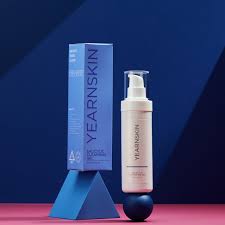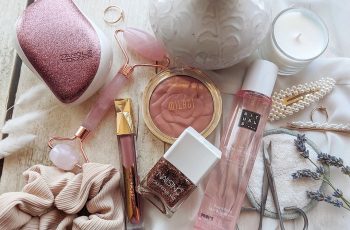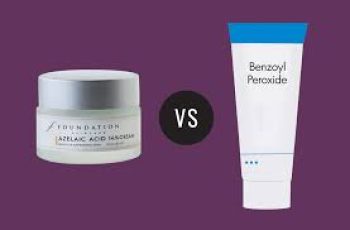
Can You use Salicylic Acid Serum and Niacinamide Together?
Layering skincare products can be a tricky task to tackle, especially with us being so spoilt for choice with potent and high performing skincare ingredients. You may have noticed that teaming these ingredients have been the main topic we’ve been focusing on in our most recent blog posts. Today is a new addition to the series with me hopefully answering the question can you use salicylic acid serum and niacinamide together?
So, let’s find out more and investigate what these two skincare powerhouses provide and how you can layer them in your daily skincare routine.
Can I use salicylic acid and niacinamide together?
Believe it or not, you can! Both of these ingredients deliver some similar and complimentary skin benefits and when used correctly can work really well in your daily skincare routine. Here is a little more information about them and what they can do for the complexion.
What is Niacinamide?
Niacinamide is a water-soluble form of vitamin B3 that contains impressive humectant properties that results in it having the ability to draw in moisture surrounding the skin and locking it into the skin. This then results in the complexion looking hydrated and plumped with a youthful bounce. Many skin concerns such as dry, flaking patches of dead skin cells are moisturised and all signs of skin ageing such as fine lines and wrinkles significantly reduced.
What is Salicylic Acid?
Salicylic acid is the most popular Beta Hydroxy Acid (BHA) and is oil-soluble which means it is able to penetrate further down into the skin reaching deep into the pores and ridding them of excess sebum, dirt, bacteria and impurities. It will also have an effect on the build-up of dead skin cells that often sit on top of the skin and result in it looking lack-lustre and dull that often leads to frequent breakouts and blemishes. This acid is known for being very potent and those who are often prone to sensitivity must check with a doctor or dermatologist to ensure you are able to introduce salicylic acid into your routine without any worry of skin irritation or allergic reaction.
As mentioned, there are some similar benefits that both of these ingredients can provide for the skin, the main one helping to manage and control the production of sebum. Salicylic acid removes the excess sebum whilst niacinamide reduces any over-production in sebum by decreasing the glyceride and fatty acids found on the surface epidermis layer of the skin. By teaming these ingredients together and consistently using them for over 12 weeks you will have a notably improvement of the skin texture and the size of enlarged pores are reduced making them less visible.
How do you use niacinamide with salicylic acid?
This is dependent on the type of skincare product you decide to use as both of these ingredients can be found in an array of different skincare formulations. If you are new to them and are just starting to use them in your routine, particularly salicylic acid, using a face cleanser or wash containing active levels of the BHA would be your best option. Generally speaking, face wash and cleansers spend the least amount of time of the skin making them an easy product to use when building the tolerance of your skin. Having said that, applying niacinamide before salicylic acid will not only reduce the chances of irritation, but will help the BHA absorb into the lower layers of the skin quicker due to the fact the humectant properties of niacinamide will make it penetrate more rapidly.
To give you a better understanding of how to use skincare products containing these active ingredients, here are the most beneficial way of using them depending on which skin type you have.
Oily Skin Type
By combining both ingredients together you will find the sebum production is controlled allowing those with skin types that is blemish-prone you are able to manage any breakouts. With the help from the blemish combating salicylic acid it will reduce blemish size and how often you experience them. All this, whilst niacinamide is preventing your skin becoming stripped of all the essential oil it needs to remain healthy by locking moisture in and ensuring the complexion is hydrated and feeling comfortable.
Here are some examples of how to use niacinamide and salicylic acid work together-
Option One
Applying a chemical exfoliant toner enriched in salicylic acid will slough away dead skin cells and help clear the pores of excess sebum and impurities.
Follow this with a serum packed with niacinamide resulting in any moisture surrounding the skin to be locked in leaving you super hydrated.
This is a great option if you are new to salicylic acid and want to introduce it slowly into the skincare routine.
Option Two
Apply a serum containing niacinamide all over the skin
Follow this with another serum enriched in salicylic acid
This won’t overload the skin as both ingredients work on different areas of the face and is a great way of using both niacinamide and salicylic acid once your skin has built a tolerance to the BHA.
Dry Skin Type
For those with a dry and perhaps, sensitive skin type, it is known that salicylic acid when used incorrectly can create irritation and redness. Generally speaking, it is unadvisable to use this acid if your skin is dry and prone to sensitivity. If you have any concerns you must consult a doctor to determine the best route when it comes to using BHA in your daily skincare regime. If you are wanting to find out more about salicylic acid, you can check out our dedicated blog post.
Combination Skin Type
When it comes to combination skin types its best to use a more focused, topical application of salicylic acid to the areas that are prone to blemishes, this will prevent the other dry areas of the skin becoming tight and uncomfortable. Niacinamide however, can be applied all over the face as every skin type would benefit from this clever humectant leaving you with a hydrated, happy complexion.
There you have a little more information about how to use niacinamide and salicylic acid with some examples of how to use them with the most common skin types. It is very important you perform a patch test for 24 hours before using any new ingredient or skincare formulation. This will not only ensure you won’t suffer from irritation or discomfort but will give you a clear understanding of which products to invest in and how they would work in your routine.
Can I use salicylic acid and niacinamide everyday?
Yes you can, but always ensure you use them correctly to avoid unwanted reactions. You are safe to use both ingredients everyday once you have built a tolerance, especially to the potent BHA, salicylic acid. For best results, I would suggest using an exfoliating toner enriched in salicylic acid whilst teaming it with a serum packed with niacinamide to counteract any potential dryness caused from the acid.
Once the skin has built its tolerance and you have both ingredients established in your daily skincare routine, you will find it is easy and effective to use salicylic acid and niacinamide everyday.
What can you not mix with niacinamide?
Out of all the skincare ingredients available, niacinamide can work with a great deal of them, all of them apart from vitamin C. That doesn’t mean you can’t use them together, but what you will find is both vitamin C and niacinamide are rich in antioxidants and when applied together or without the correct amount of wait time in between each ingredient will counteract each other rendering them both completely useless. If are wanting to use both many suggest using vitamin C in the morning and niacinamide in the evenings to gain optimal results from both ingredients.
What should you not use with salicylic acid?
It is recommended to avoid using salicylic acid with the potent skin ingredient retinol. Both of these powerful ingredients deliver outstanding skin benefits, especially for those who have acne and blemish-prone skin types. Using both together will however can become too much for the skin and lead to irritation, rashes, redness, flakiness and all-round discomfort. Much like vitamin C and niacinamide, if you are wanting to use both separate the products completely and apply salicylic acid in the morning and retinol for the evening.
If you have any concerns with how these ingredients will affect your skin it is best to consult a dermatologist or trained professional for the peace of mind it won’t result in a negative impact on the skin.
There you have a little more information about the popular and well-loved skin ingredients niacinamide and salicylic acid, I hope I have cleared up a few questions for you today, but as always you can find me over on our Instagram, come and join us!


